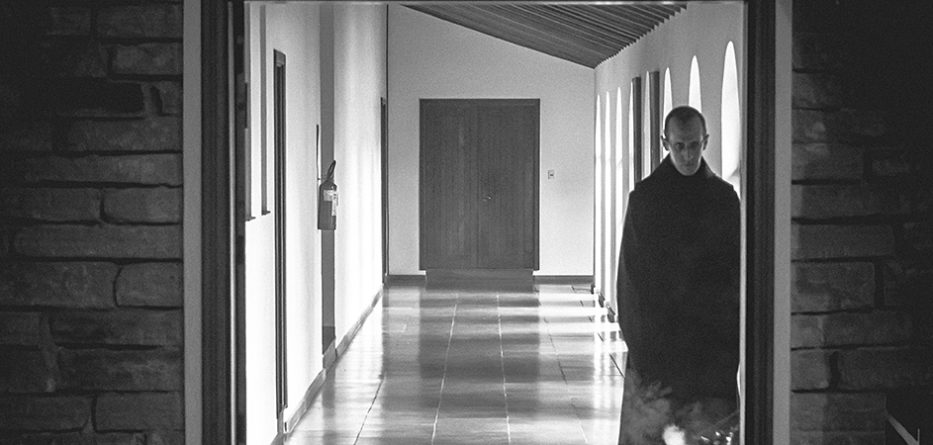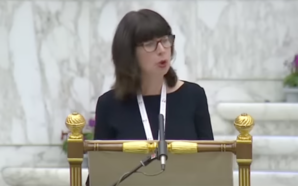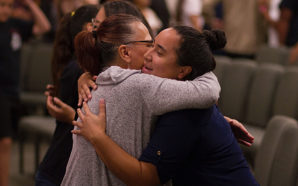A common and painful response to changes of which we strongly disapprove is disgust. This is a mixture of disapproval at the change and resentment that it disturbs our allegiances. It is particularly acute when the change occurs in groups to which we belong: in schools, football clubs, businesses, churches and national societies. Disgust often leads to crisis — to a decision about whether we should separate ourselves from such groups.
In the case of society as a whole, separation is difficult. In Australia, for example, there are some who have been appalled by what they see as disrespect for life and for religious freedom in legislation. Short of emigrating, which currently presents its own difficulties, they will have difficulty in finding viable ways of dissociating themselves from a society they believe to have lost its way.
A few years ago in the United States, marked by greater polarisation and consequently sharper judgment of particular social trends, such disgust led media commentator Rod Dreher to propose the Benedict option. At that time a recent convert to Catholicism, he was appalled by the collapse of support for traditional marriage, the tolerance of abortion and the pressure for gay marriage. Untypically, he associated these trends with the excesses of economic liberalism, militarism and corporate greed. The Benedict option, named after the fifth century Catholic saint who founded monasteries and whose Rule has been adapted by monastic movements throughout Western Europe, invited Catholics in particular to withdraw as far as possible from society. They were to form intentional communities held together by such practices as common prayer and home education for children.
Dreher’s proposal won widespread publicity but little support. The option of withdrawing from society, however, remains attractive to many people after they have experienced the isolation imposed by COVID-19 and have been led to revaluate such practices as leaving home to work, suburban living and the balance between work and family. Revaluation can arise from or lead to disgust. In response to Dreher’s suggestion it is worth pondering on withdrawal from society and on what the early monks may have learned about it.
Withdrawal from society can seem attractive if it is imagined as bringing freedom from conflict and from complexities of life and of human relationships. It seems to offer a peaceful and unencumbered life. Indeed, in religious polemic, monasticism has often been attacked as an escape from real life with the responsibilities to family and society that accompanies it. It is seen as an opting out of a full humanity, not as a deepening of it.
Both the story of Benedict and the common experience of monastic life are very different from this peaceful and childlike vision. According to a legend-filled account of his life, Benedict founded twenty monasteries near Subiaco before moving to Cassino and survived two attempts on his life. One was by a fellow monk and the other by a local priest. Hardly a withdrawal to a carefree life.
The stories and sayings of early monastic teachers in Egypt and Syria, too, emphasise leaving the city, but they do not envisage this as a retreat from the world. They visualise it rather than as an enrolment in an inner battle, which is crucially played out in their relationships with one another. Central in their teaching was the need not to judge one another. On that mutual respect and love monastic life was founded. It was built on acceptance and compassion, not on disgust.
The monks, too, were committed to the disciplines of work as well as to prayer as part of their life in common. They had to support themselves. The routines of work in monasteries and the fact that they were done for the long term meant that they were efficient economic enterprises. They supported the economy of the neighbouring settlements, provided education for children and were woven into society. The movers and shakers of 16th Century England did not want them closed because they failed to contribute richly to society, but because that contribution could profitably be directed into their own pockets.
The ideas from The Rule of Benedict have shaped the Christian imagination more than did the life of Benedict himself. It is not a rule book for leaving the world but a guide to finding a living place in a harmonious set of relationships within the world. The relationships are directed to God, and run through other monks, through prayer and reflection through work, through the environment and through the local settlements. The Rule is as concerned with the cook as with the hermit. It is a document above all of moderation. It is as concerned to meet the temptations met in solitude and disgust as those met in ambition and profit making.
Most recent initiatives among Catholics to form radical communities have also been more concerned to change and build a new world than to leave it. Disgust has not been central to them. They stood or fell by the quality of the relationships they formed with one another and the surrounding world. In Australia such communities as at Gladysdale and Maryknoll and Whitlands were formed by young people, usually encouraged by charismatic clergy. Their immediate challenges were to support themselves, and to handle the complex changing relationships with the world in which they lived. The Whitlands community, for example, was at the top of a mountain range. Heating and cooking posed difficulties. The solution sought lay in buying a second-hand steamroller in the city and using it as a generator. That the steam roller broke down before it could tackle the mountain roads demonstrated the necessity and challenge of adapting to modernity.
Benedict’s Rule anticipates and handles the weakness inherent in enthusiastic movements led by charismatic leaders to leave the world. They import into the communities the power-based relationships in the world that they left. The dynamic can be seen in such novels as Iris Murdoch’s The Bell and in the abuses of charismatic authority in many of the lay Catholic movements within the Catholic Church. In the face of those tendencies to isolation and unequal relationships, Benedict’s rule is concerned with fostering multiple interlocking relationships between people and with the surrounding world. They are about personal growth within a world seen as gift.
This reflection on the monastic tradition does not suggest that it is wrong to feel disgust at the direction taken by the groups to which we belong and to their members’ attitudes and practices. Nor that it is an improper response to form small groups in order to support a better polity and attitudes. It does suggest, however, that such initiatives will flourish to the extent that they are not about fleeing from the world but about engaging in it at greater depth.
Fr Andrew Hamilton SJ is consulting editor of Eureka Street, and writer at Jesuit Social Services and Jesuit Communications.
Reproduced with permission from Eureka Street, a publication of the Australian Jesuits.








